September 2023
(Excerpts from Greenglobaltrek instagram.)
For this trip to Japan, our fourth together, we choose to explore new regions of Japan. So we head to the Southern part of the main island of Honshu.
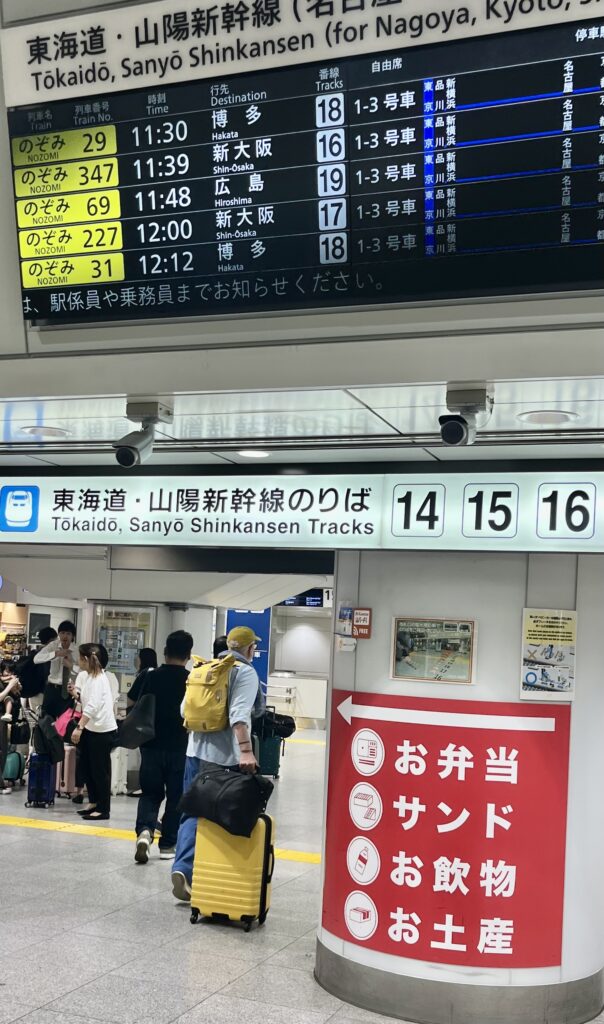
Our journey starts by Bullet Trains (Shinkansen), from Tokyo, past Nagoya, past Osaka to Kojima…
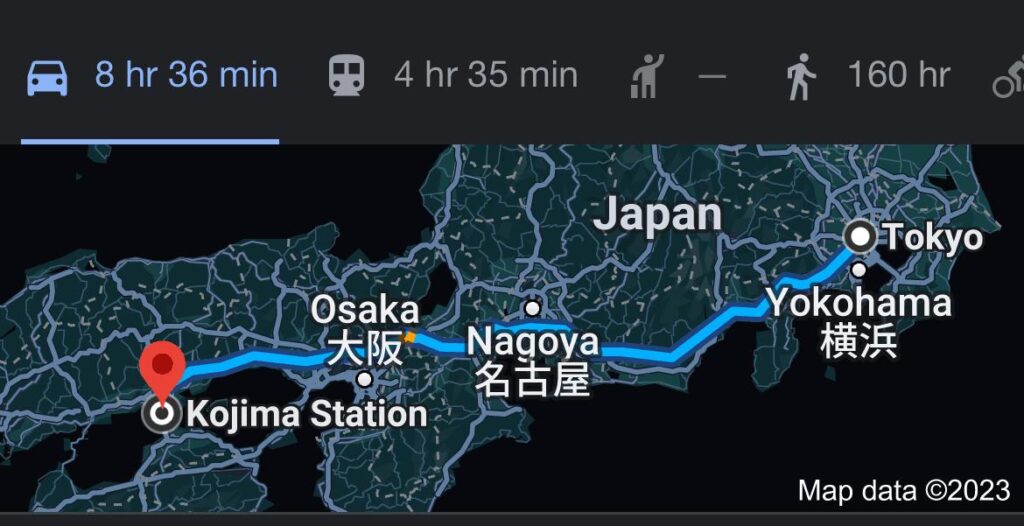
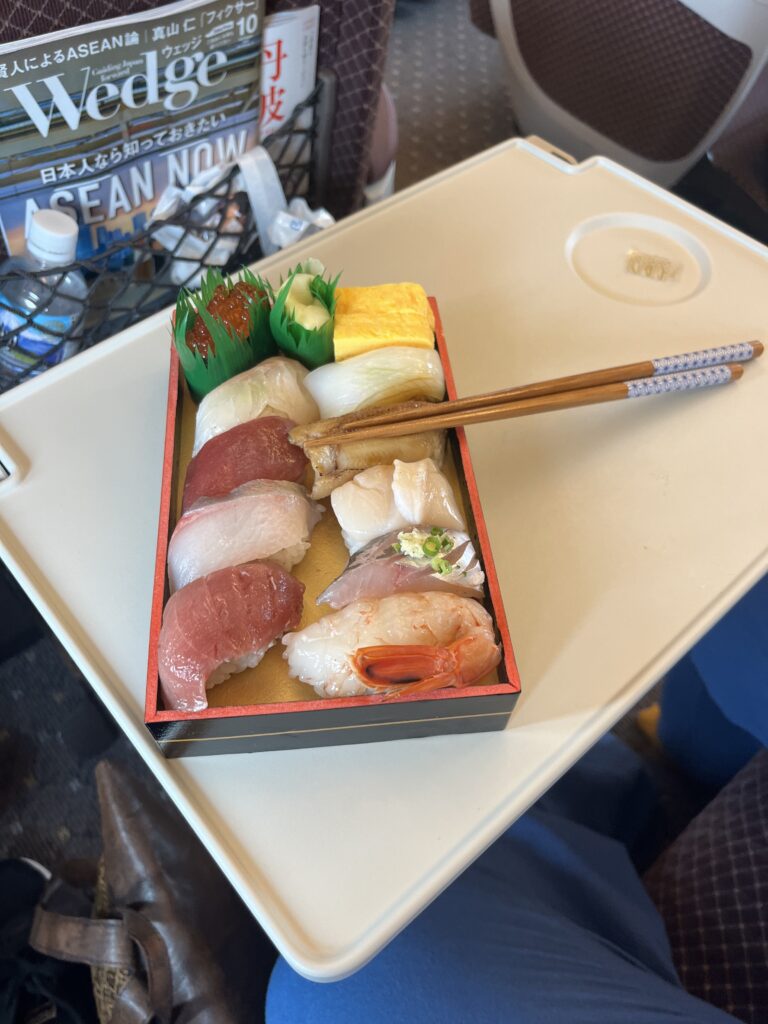
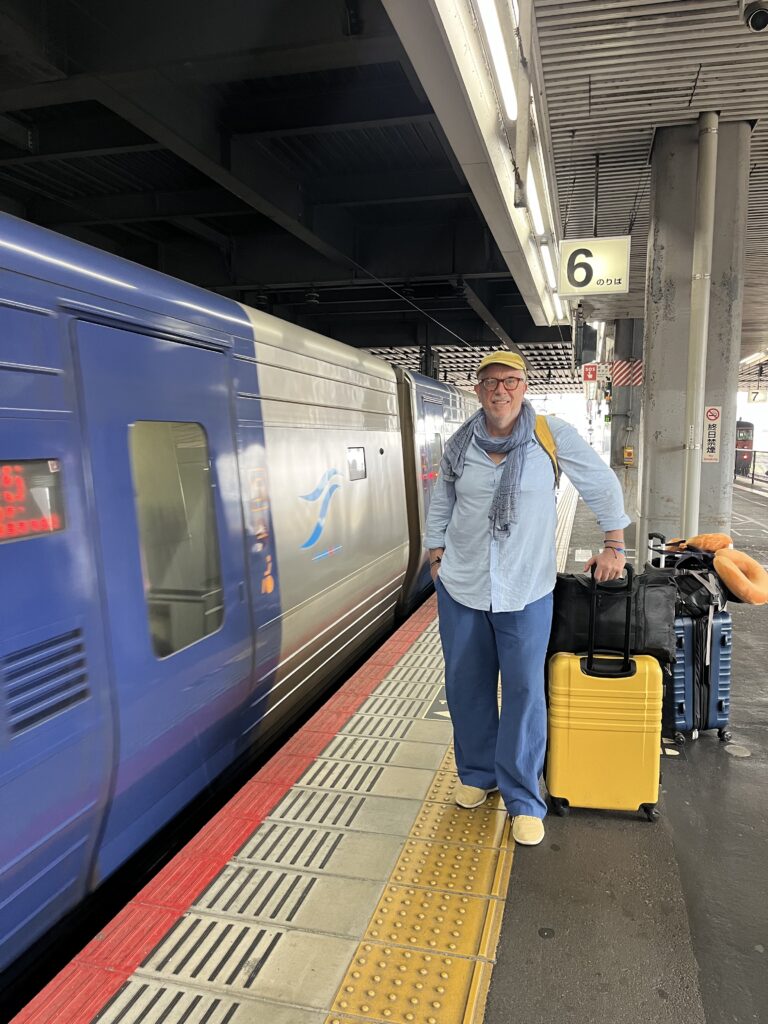
Airbnb stay at a Potter’s home
Taking a lesson from the best!
We chose our first airbnb in this region because the host and his father are master traditional Japanese potters and their studio is right next to our little airbnb, tucked into the hillside. They offer guests the opportunity to try their hand, literally, at creating Japanese bizen pottery.
Loving the rustic feel of our little house, with its old pine floor boards, the subtle scent of pine throughout and views of a lush bamboo forest overlooking the town below.
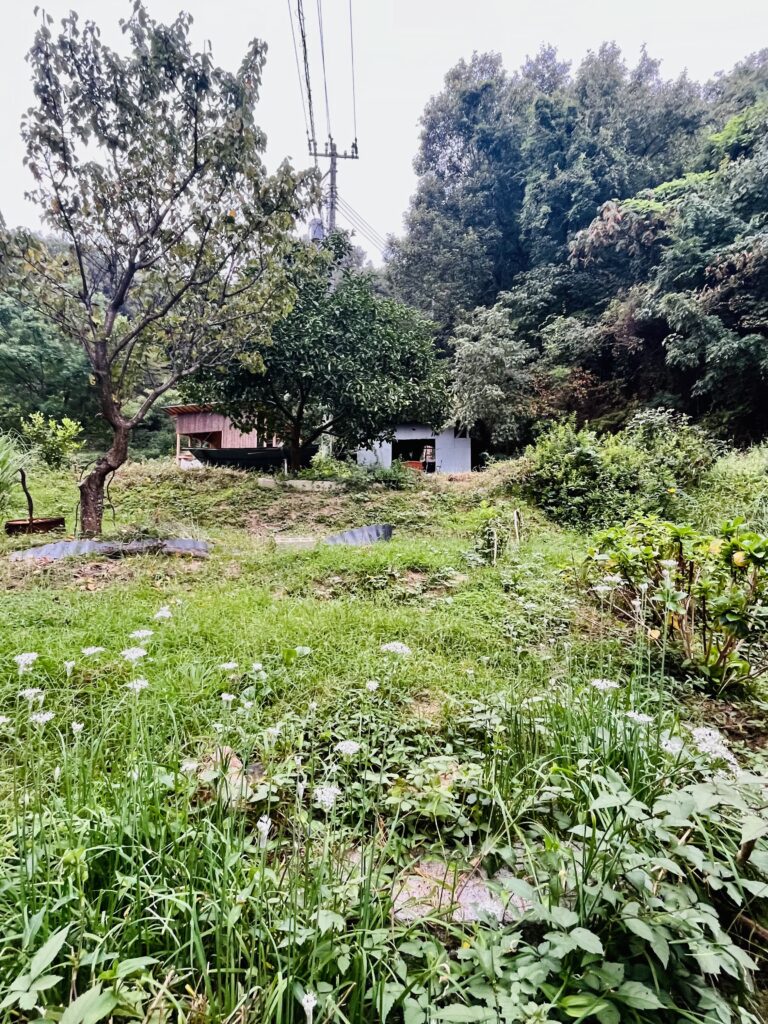
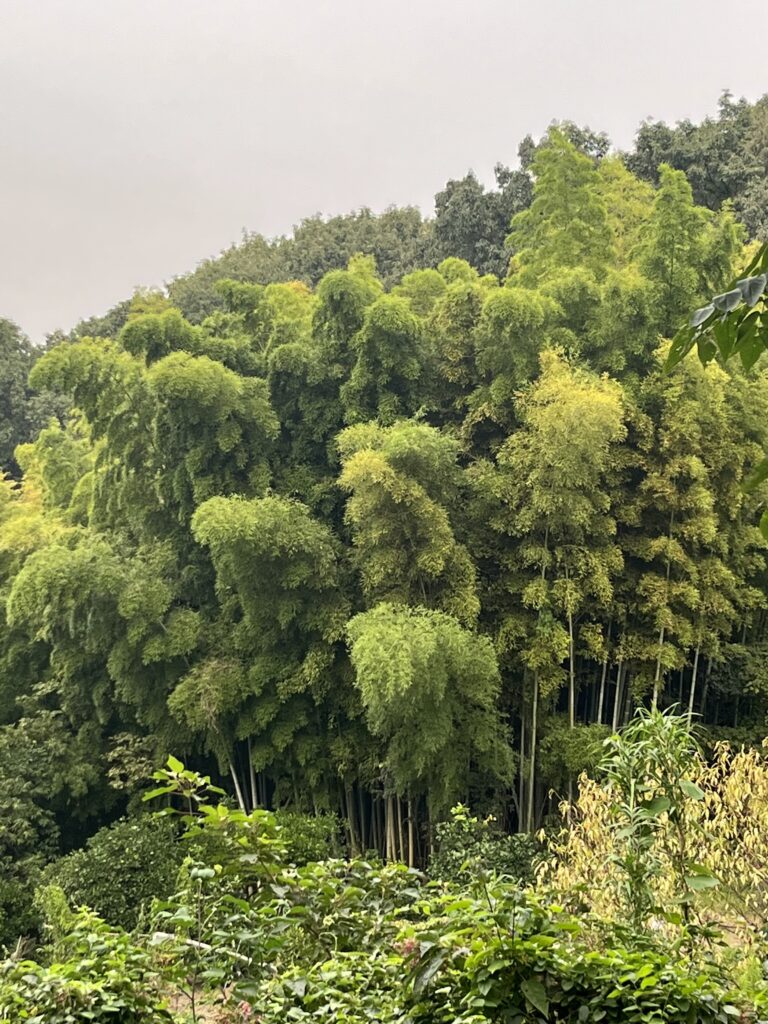
The Japanese are known for their beautiful pottery. Bizen pottery is one of the most famous types of Japanese pottery, boasting a history that stretches back a millenium.
Bizen pottery does not focus on glazing, but rather uses natural patterns created by the ash of the pine needles in the kiln (wood fire oven) and the natural color of the local clay.
We wanted to orchestrate a clean break from work for Ben and a mindshift to art and nature. WHat better than a pottery class from a Japanese ceramics master to get into the groove.
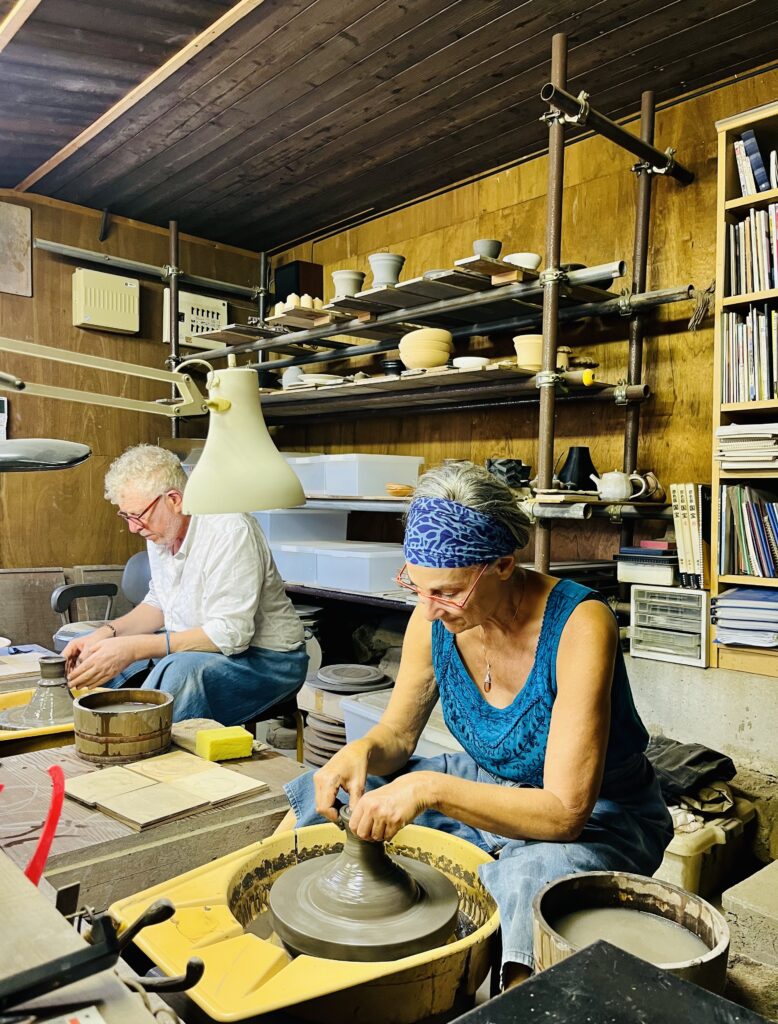
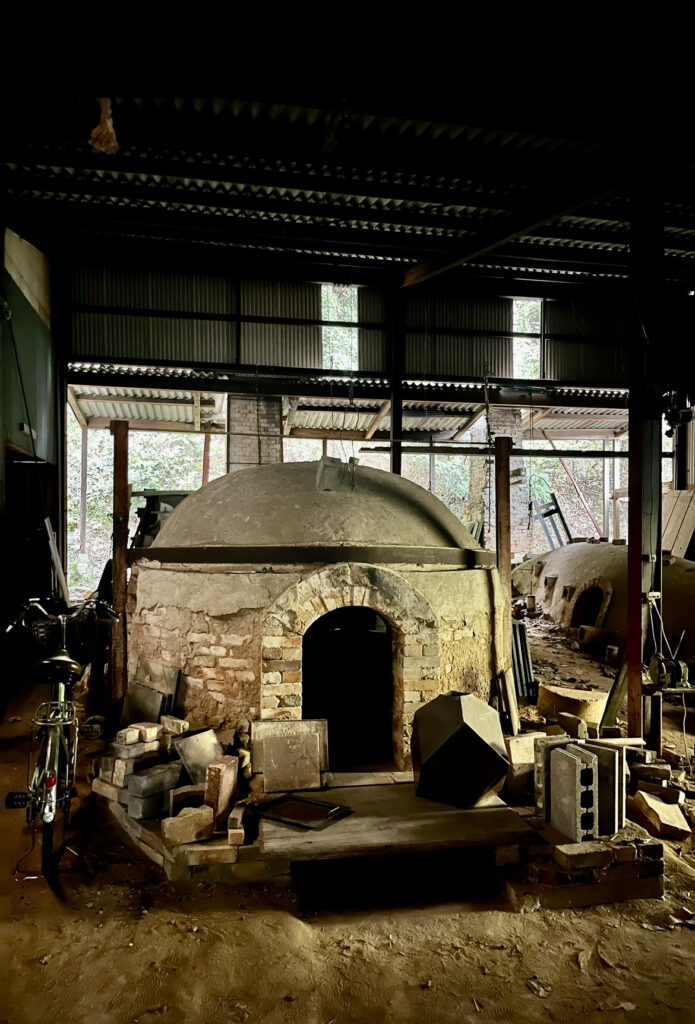
After this rustic stay at the potters’ home, we treat ourselves to a Ryokan escapade in Kurashiki, a short one hour train ride away, for our next stop…
Have you ever heard of a Ryokan?
A Ryokan is an idyllic Japanese traditional guesthouse where one is transported through time to a bygone era. Ryokans have been in operation typically through multiple generations and are the ultimate experience in Japanese lodging luxury.
Ryokans are usually ancestral homes featuring traditional architecture. One sleeps on futons, not beds, set upon pristine (tatami) straw mats. It is definitely hard and takes some getting used to. For us, a favorite way of sleeping.
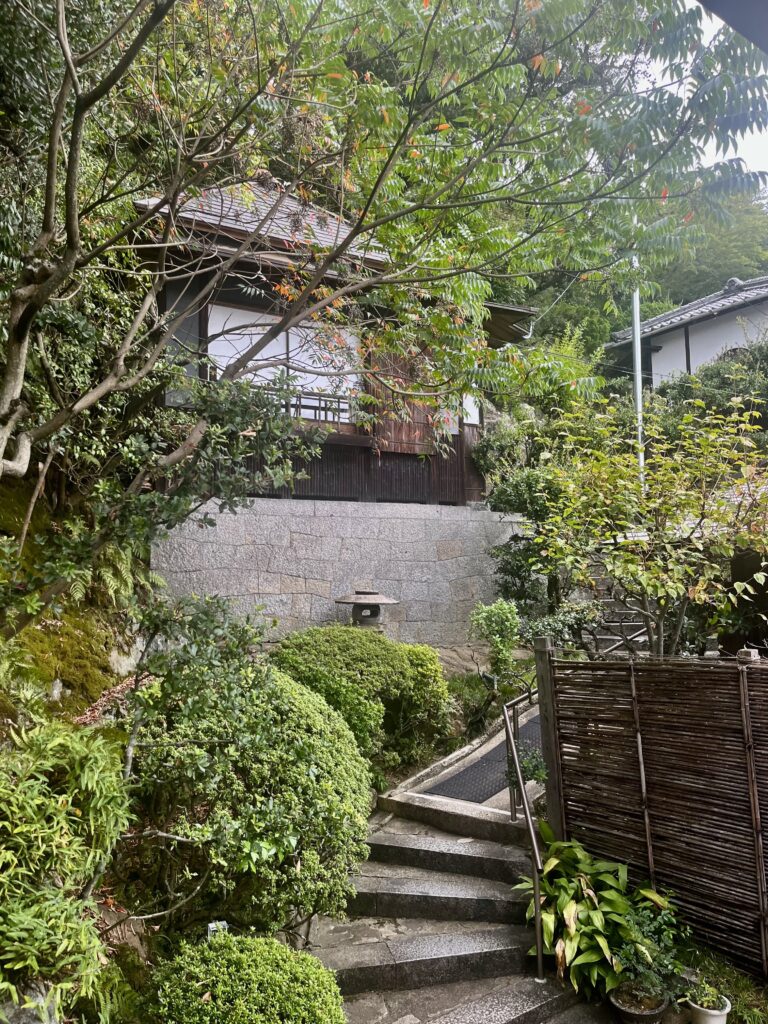
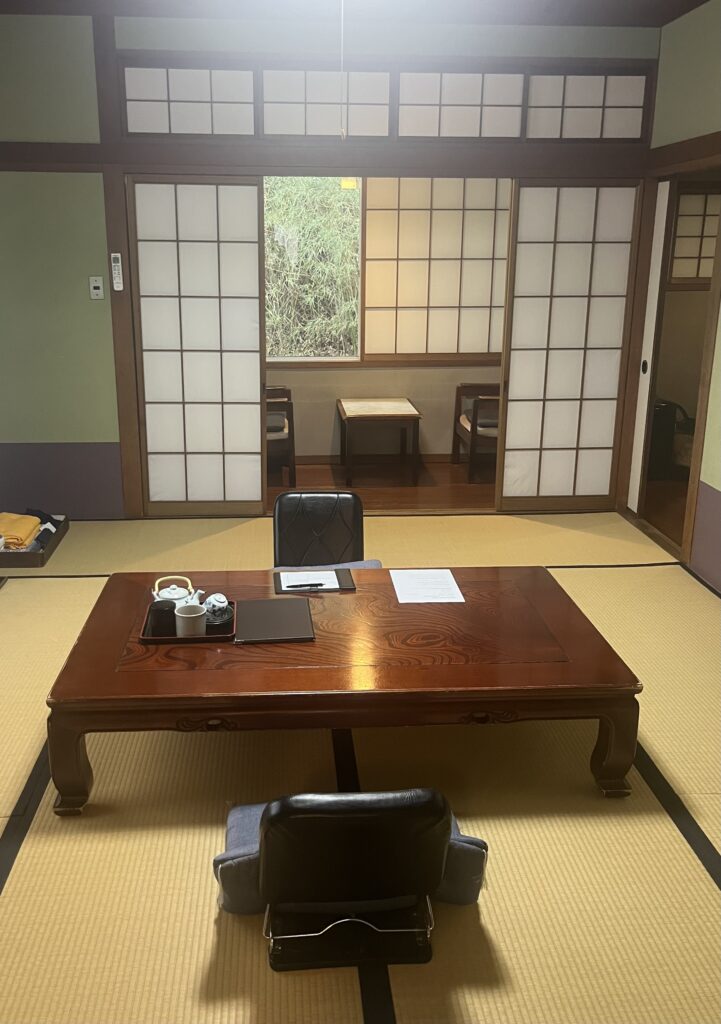

A key reason for staying at a Ryokan is the all important “ofuro”, or bath. Some are large and communal, such as in onsens with natural hot springs, some are small and ideal for a couple. But soaking in hot water (after a thorough scrub and wash) is a quintessential part of the Ryokan experience.
Within minutes of checking in, we don the yukata (light kimono) that is specifically worn to and from an ofuro. We scrub and soak in the hot private bath. While we soak, our multifunction tatami room is converted into our bedroom, with futon, as is customary.
A ryokan is also where one can taste the best of Japanese culinary arts. It would be absurd to stay at a ryokan without dining there as they distinguish themselves not just by their architecture but also by the quality of their kitchen.
A Kaiseiki dinner is a bold and yet subtle adventure through Japanese cuisine and is all about balance. It represents nature and current season (hence a summer stay would have an entirely different menu from a fall stay). It also features every form of cooking ~ moving from raw fish, to grilled, then steamed or boiled, to baked, to fried dishes. One must be hungry as the food keeps coming but with proportions that are small enough to not overwhelm.
You know what’s next… an unbelievable kaiseiki meal ~ grilled fish infused with cedar aroma, with chestnut, eggplant with thin layer of beef, clear broth udon noodle etc…
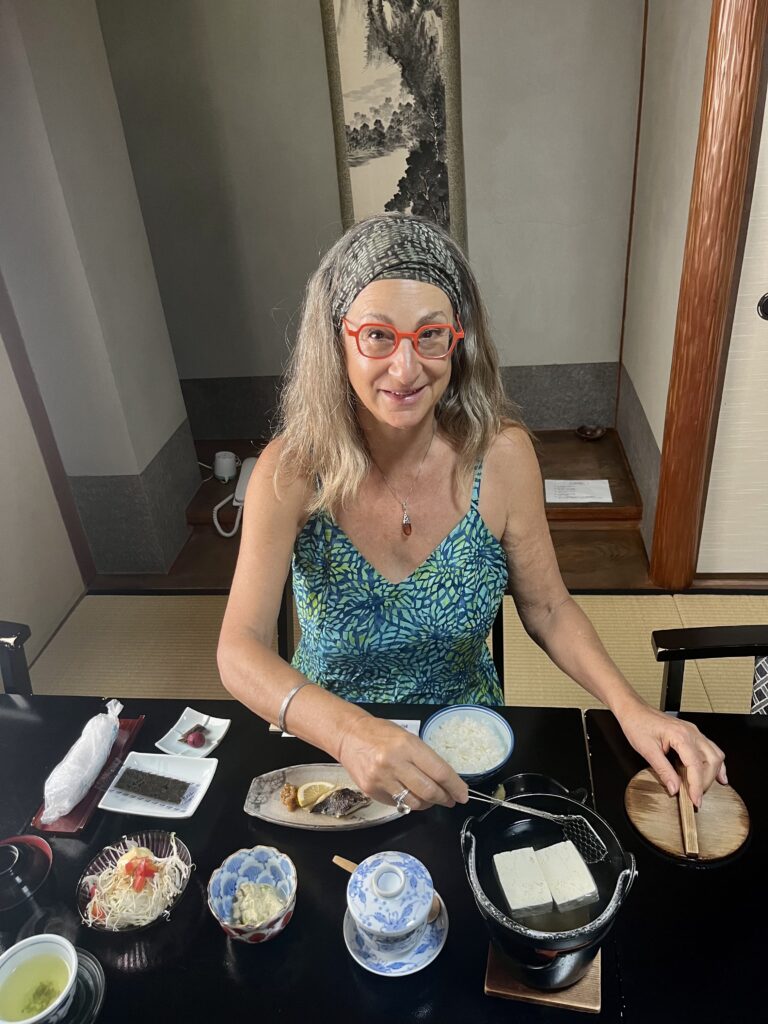
We have been transported to a form of hospitality that samurai and noblemen from the Edo era experienced. This ryokan is relatively “new”: it has been in continuous operation since 1914, a mere 110 years!
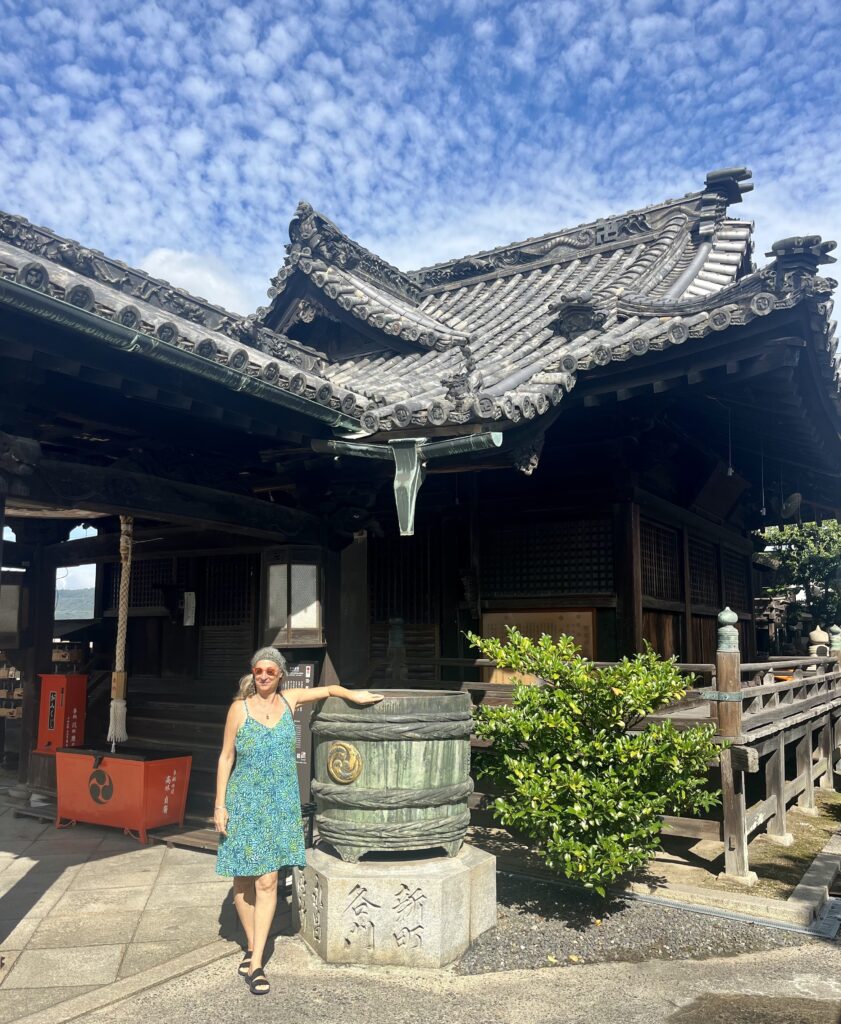
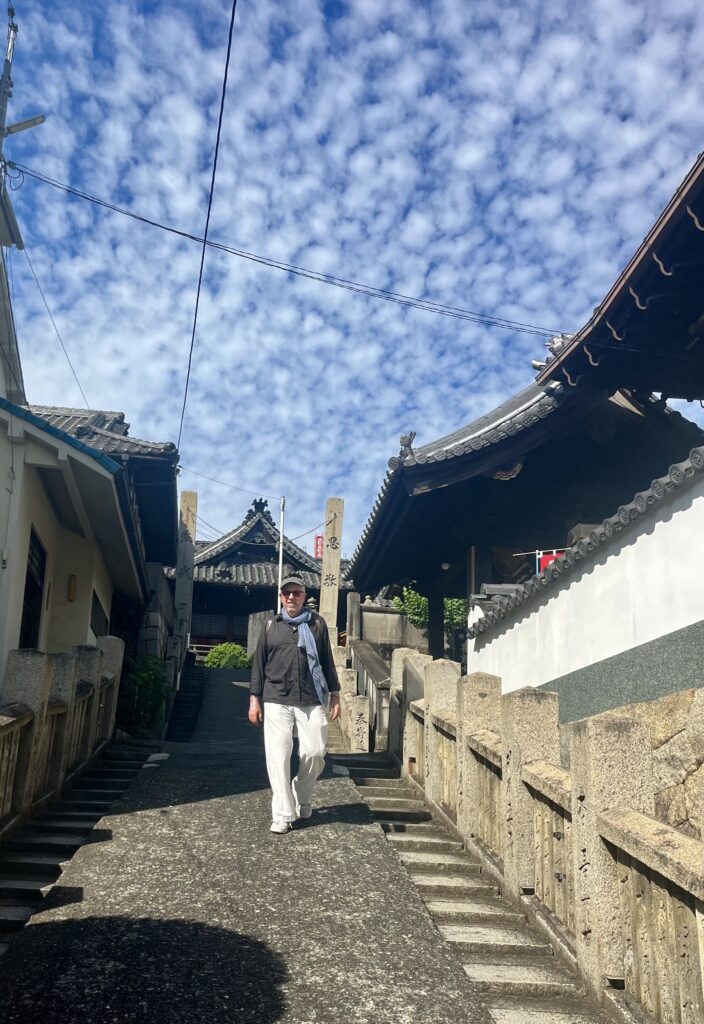
It feels like time travel to the 1600’s…
From our Kurashiki base, we travel inland to Bikan, a town that was once considered the Venice of Japan, due to all its working canals.
Once a major transportation hub with warehouses lining the canals (during the Meiji era (1900s), Bikan is now a charming merchant district along a pretty canal (where large koi fish and majestic white swans reside), lined with lacy willow trees.
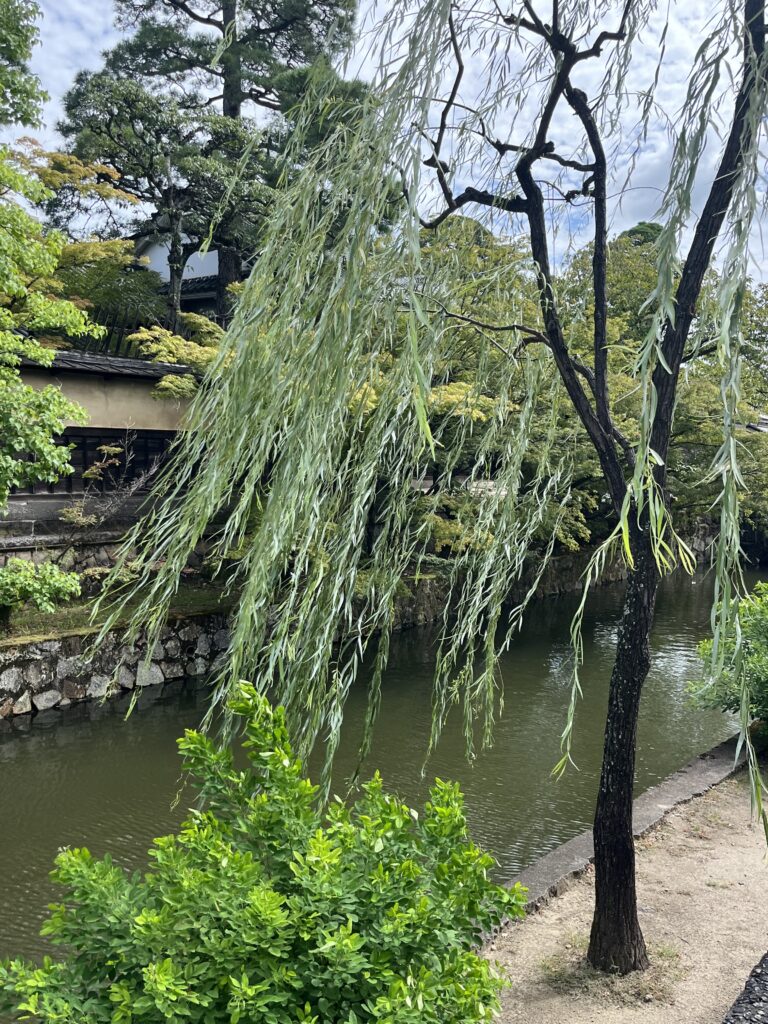
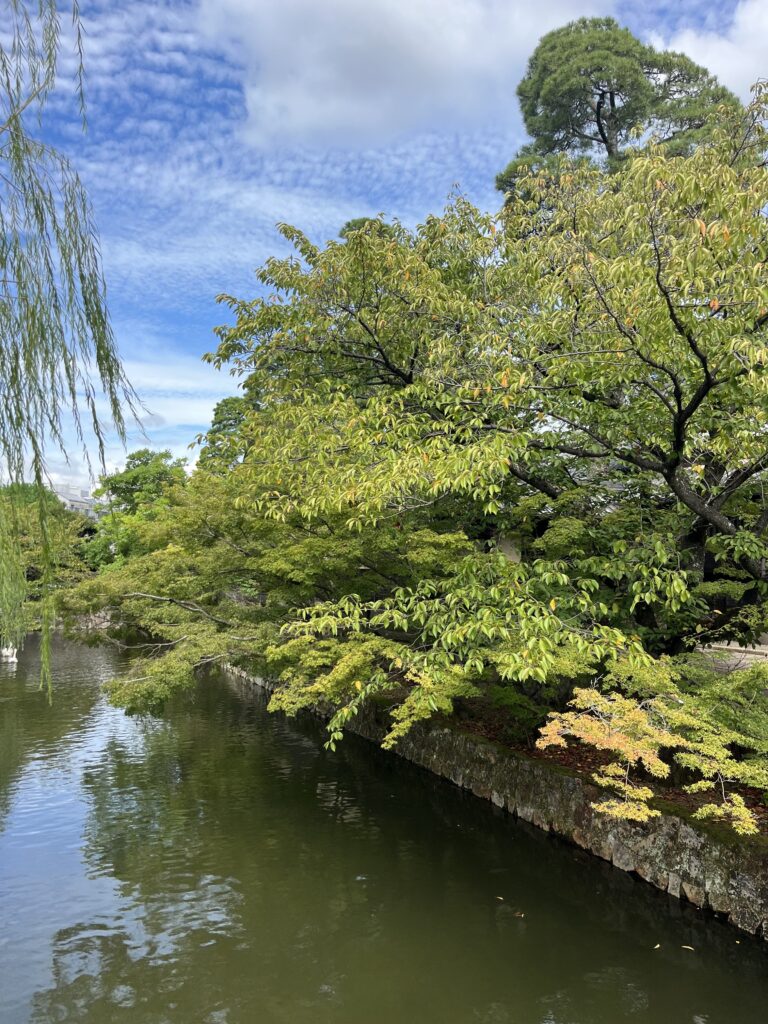
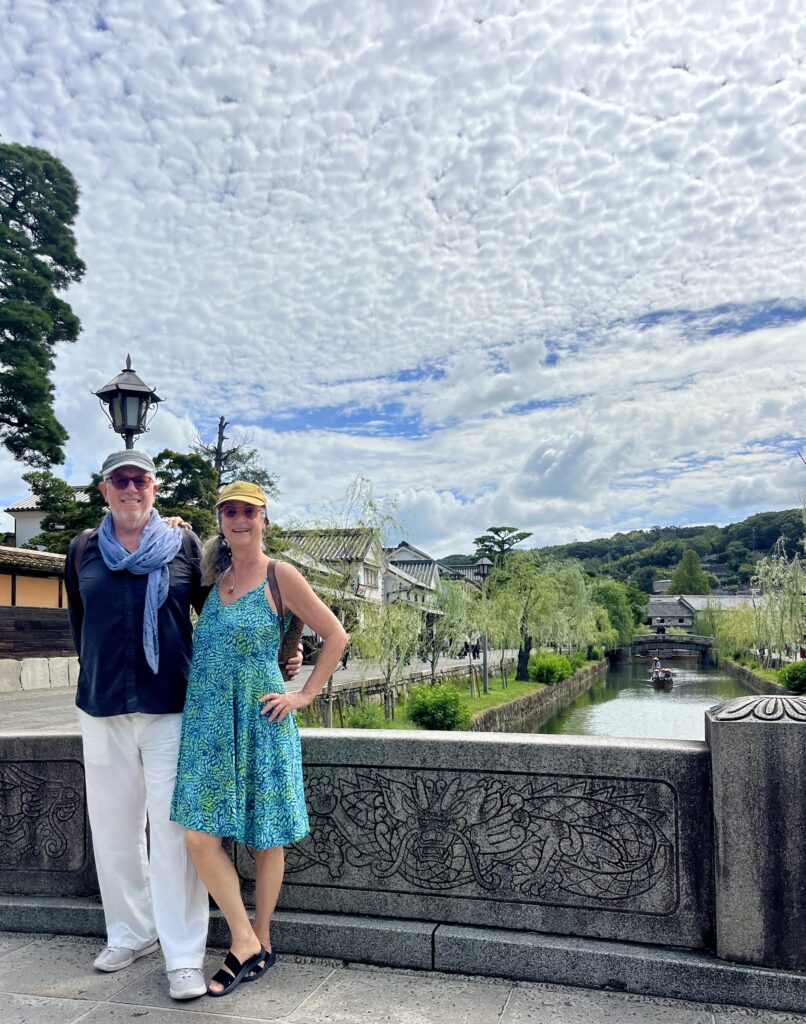
We time travel at a tranquil Japanese zen garden in a house which has remained intact though 8 consecutive generations of the same family. For the duration of a matcha tea and accompanying Japanese sweets we are transported back in time and enjoy the dappled sunlight on the mossy earth in front of us.
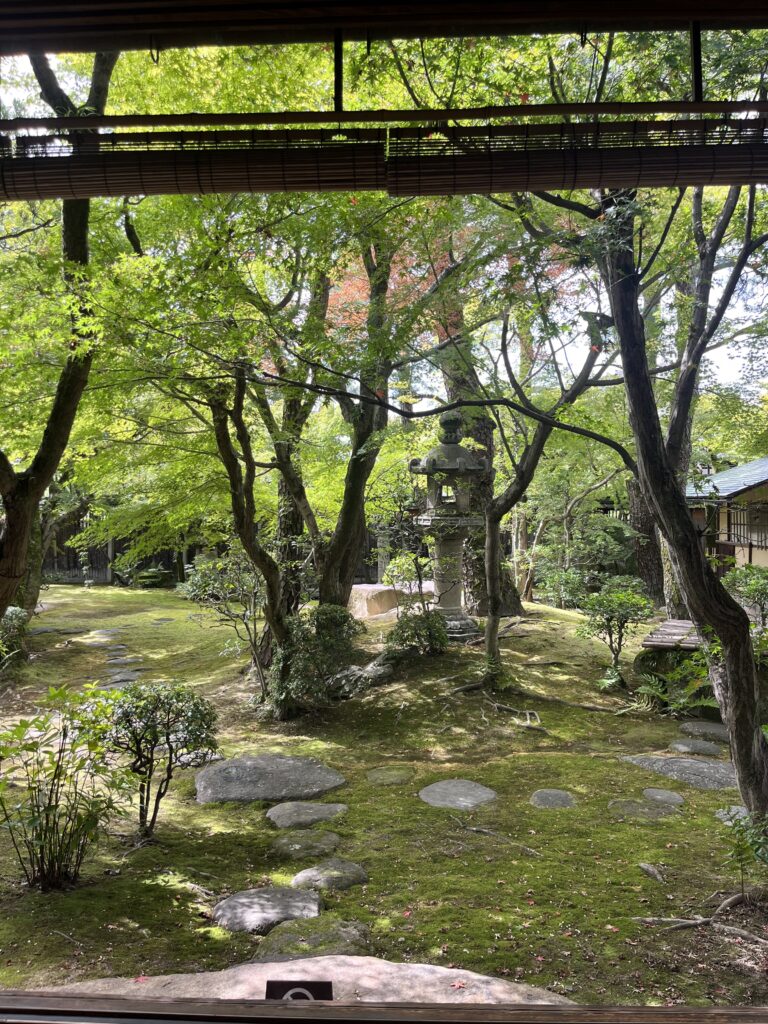
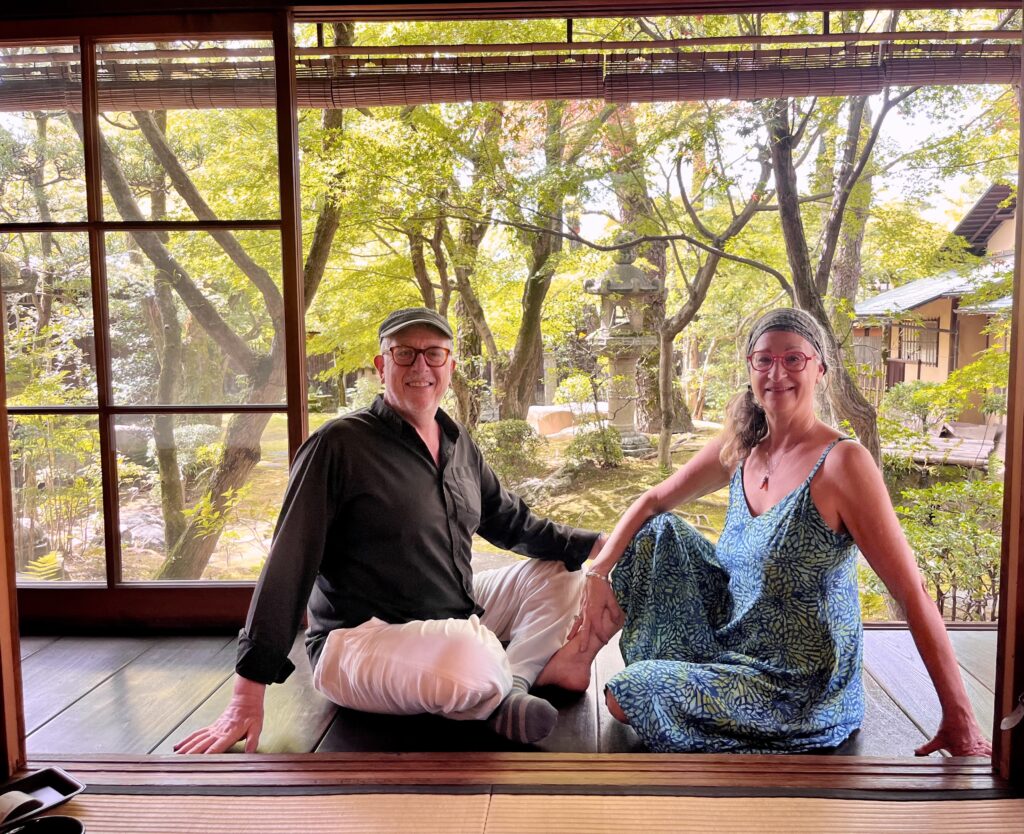
The well preserved Bikan historical district is very popular with Japanese tourists. There are specialty food shops and gorgeous pottery shops and art galleries which line the narrow streets.
The architecture spans from the ancient Edo era with its samurai class, to the more recent prosperous industrial period at turn of the twentieth century when Japan opened up to the West and immense wealth came to the Bikan business class.
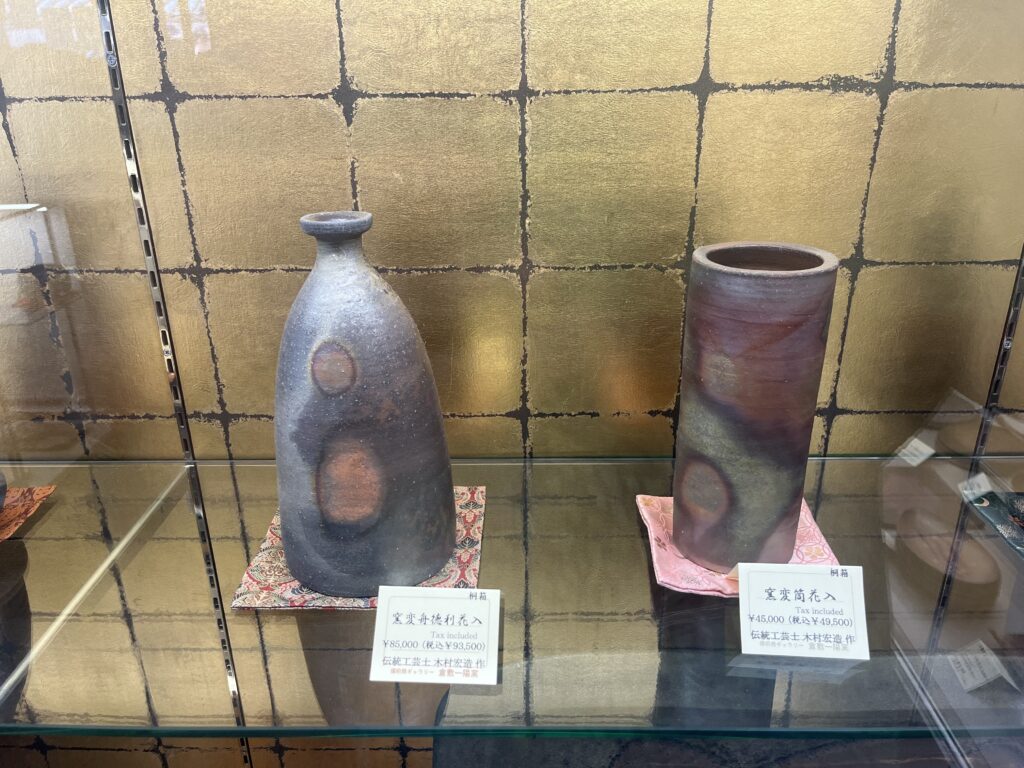
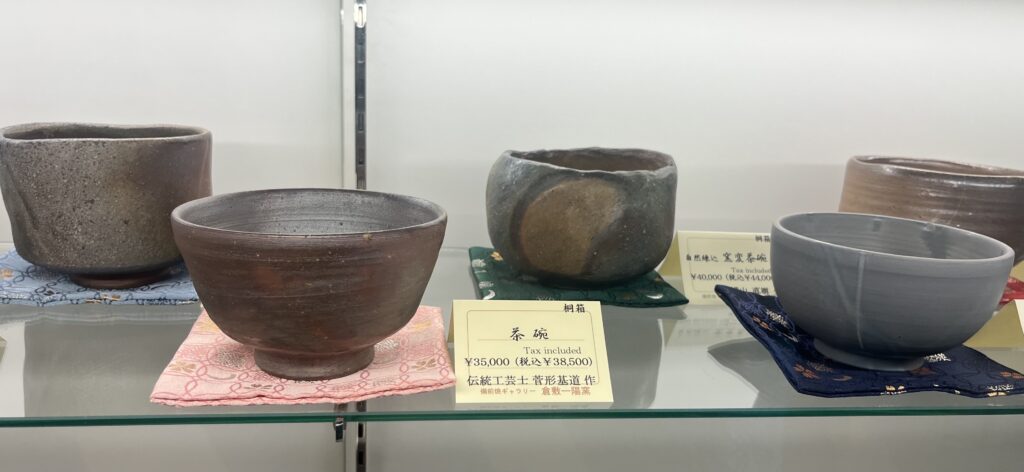
For some strange reason, Bikan is not (yet) on the foreign tourist map, as most international visitors prioritize Tokyo, Kyoto and Nara. This affords us an even more authentic Japanese experience.
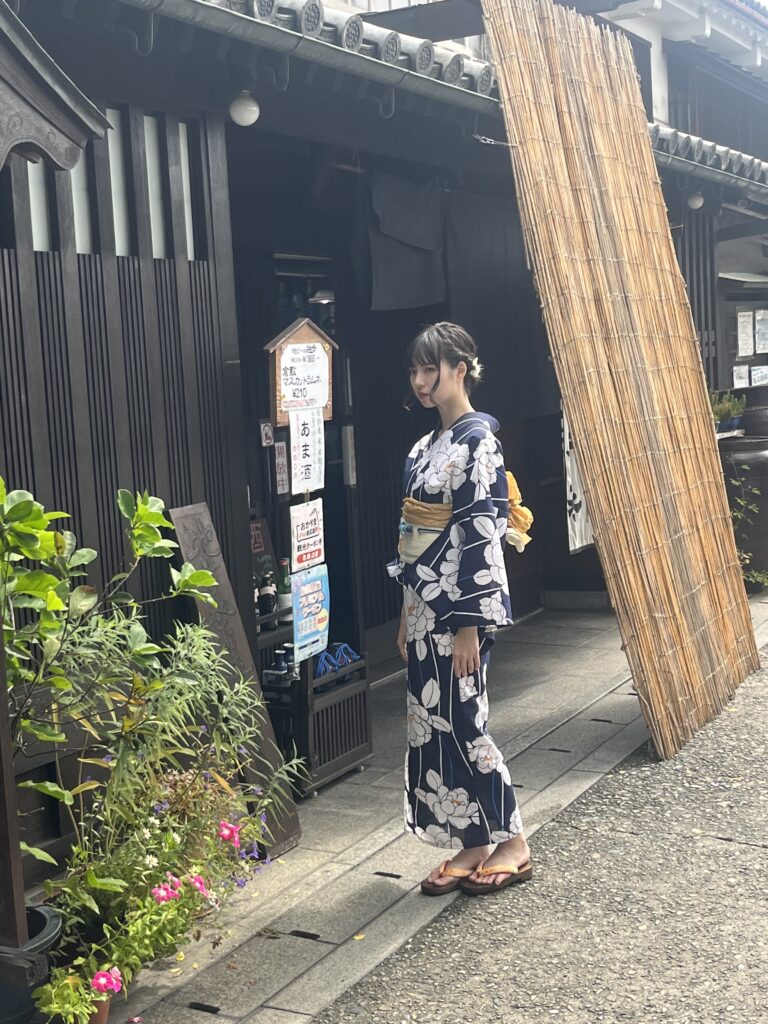
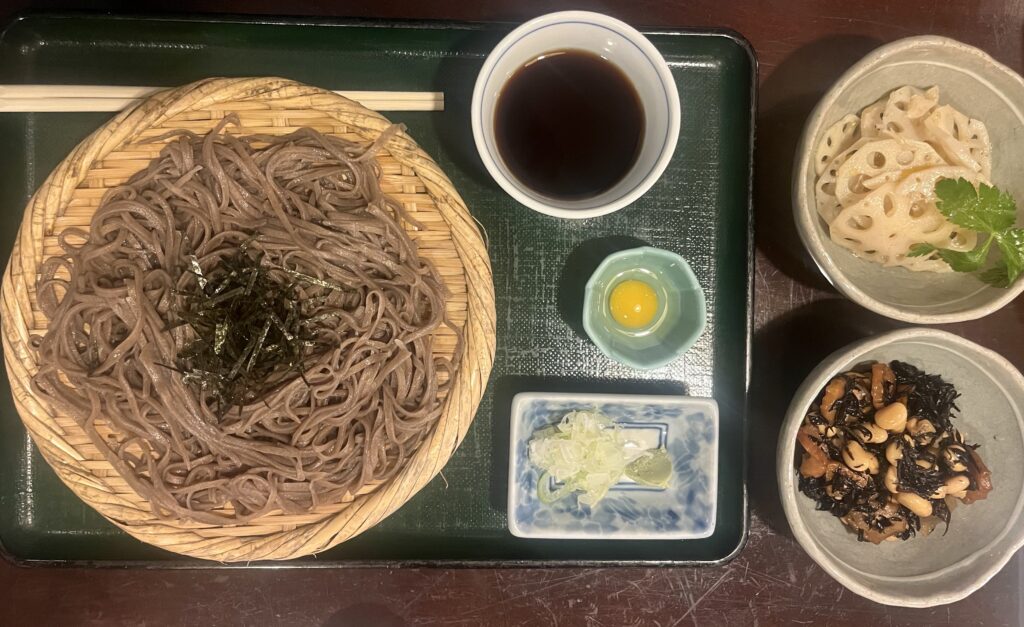
Bikan, the epicenter of Bizen pottery making has many galleries which feature beautiful Bizen art pieces.
The willow tree lined canals make for very pleasant strolls.
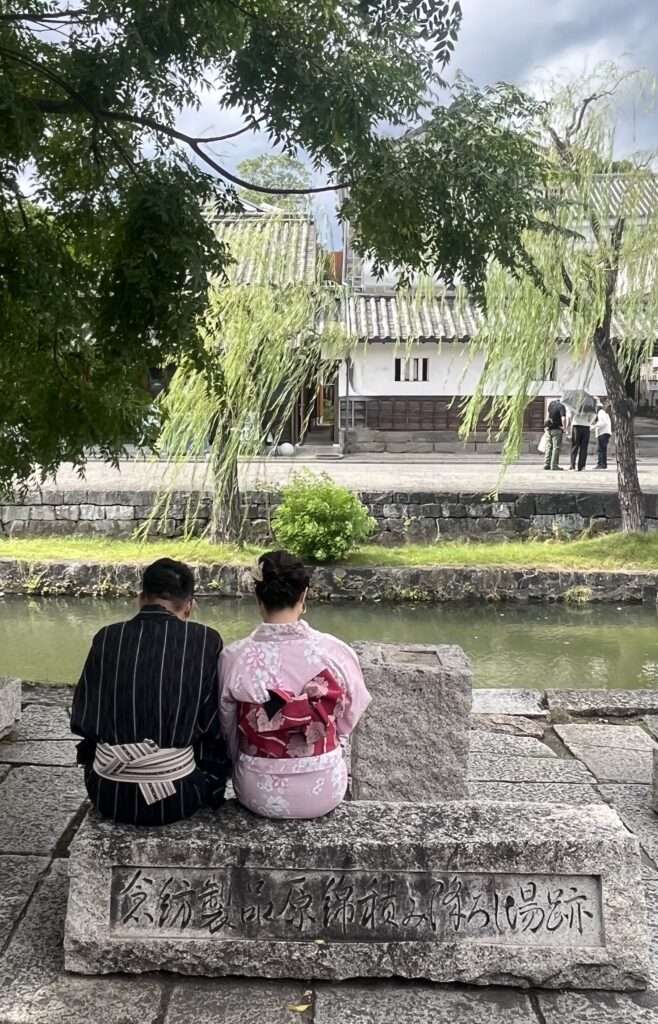
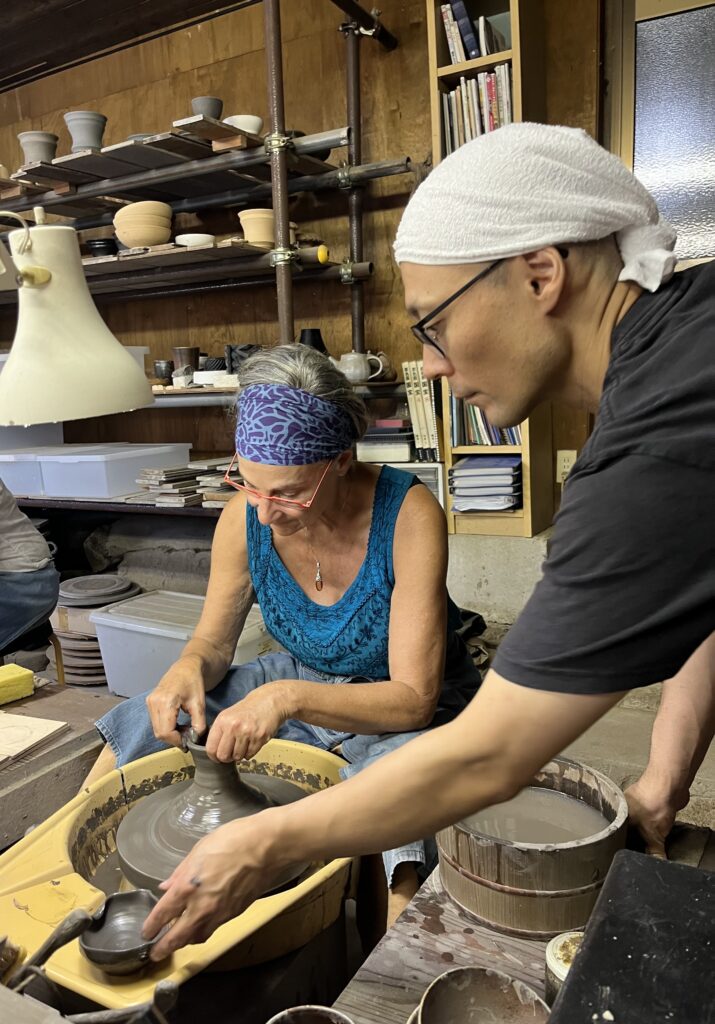
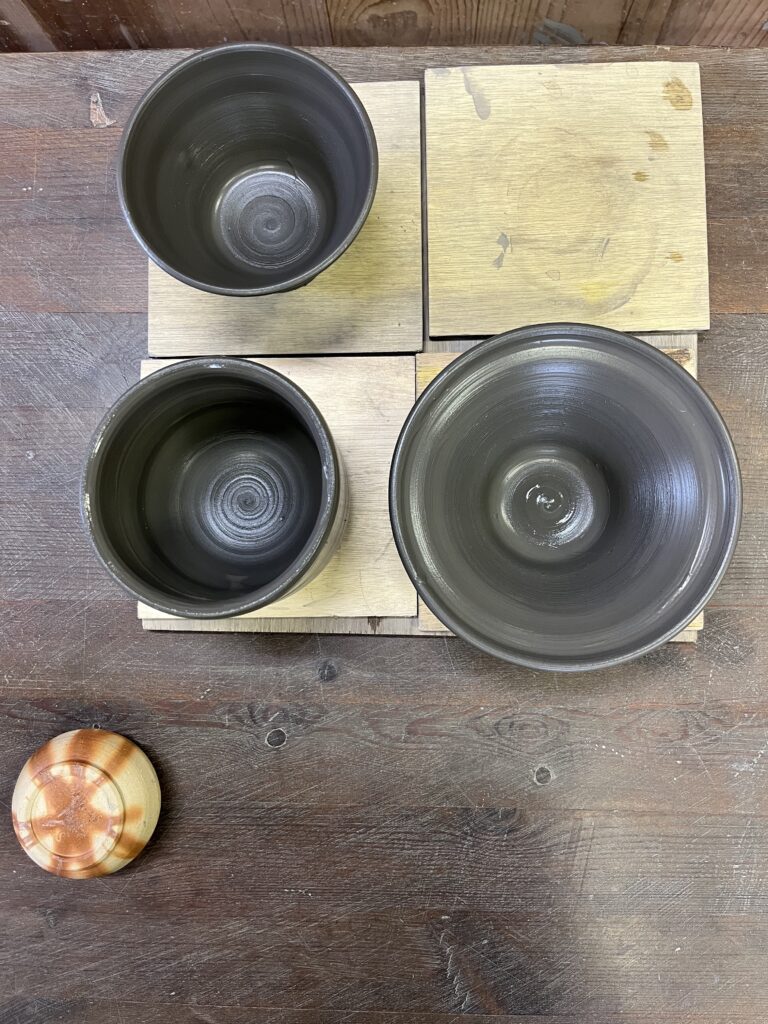
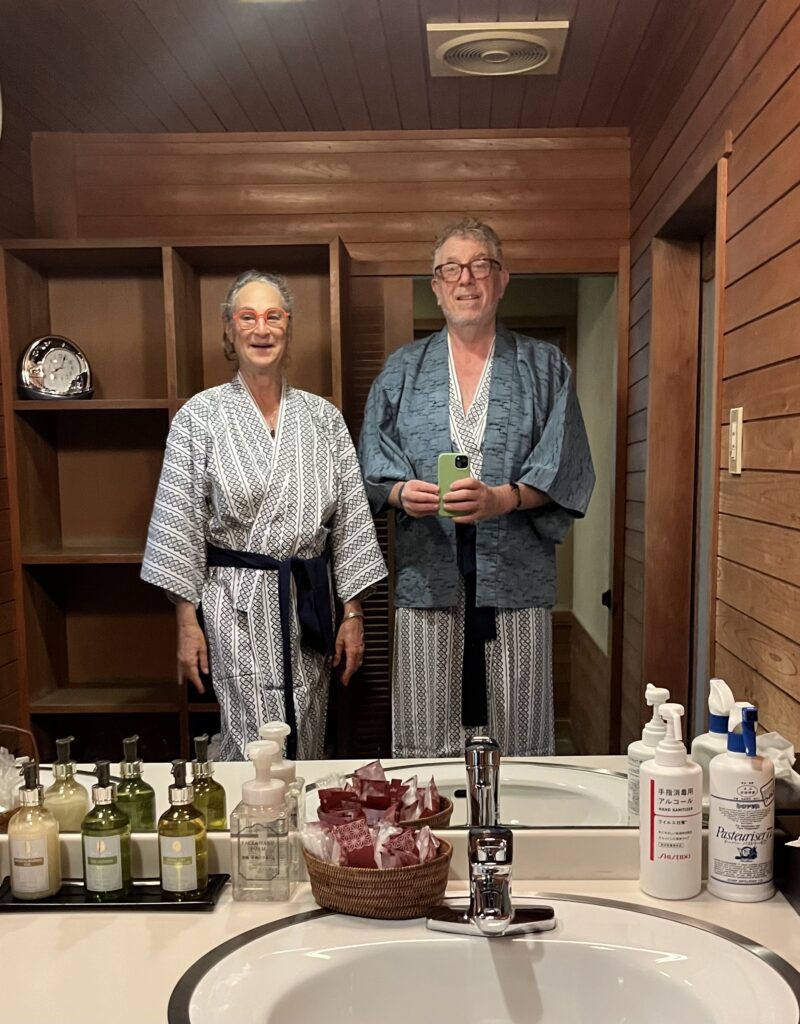
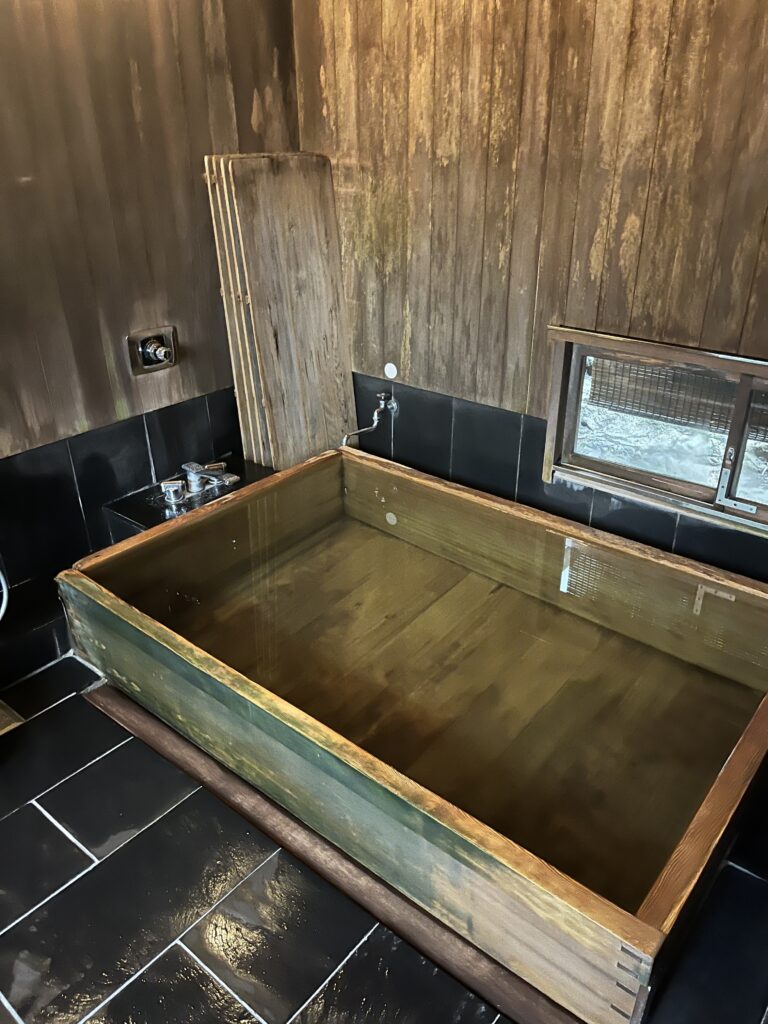
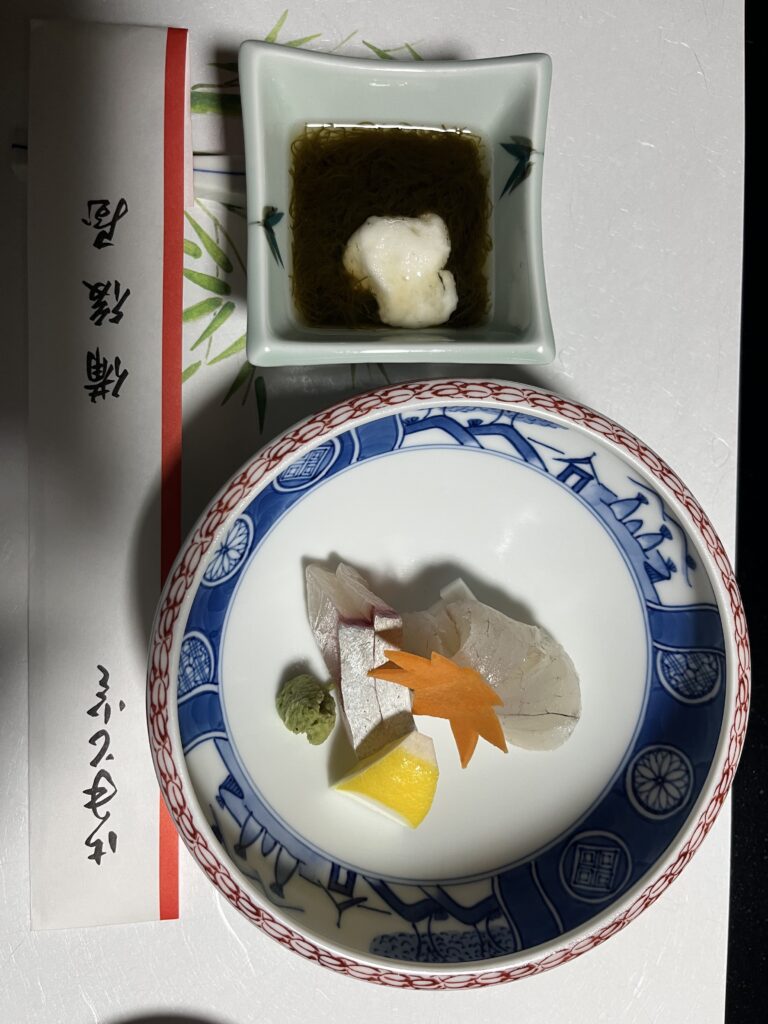
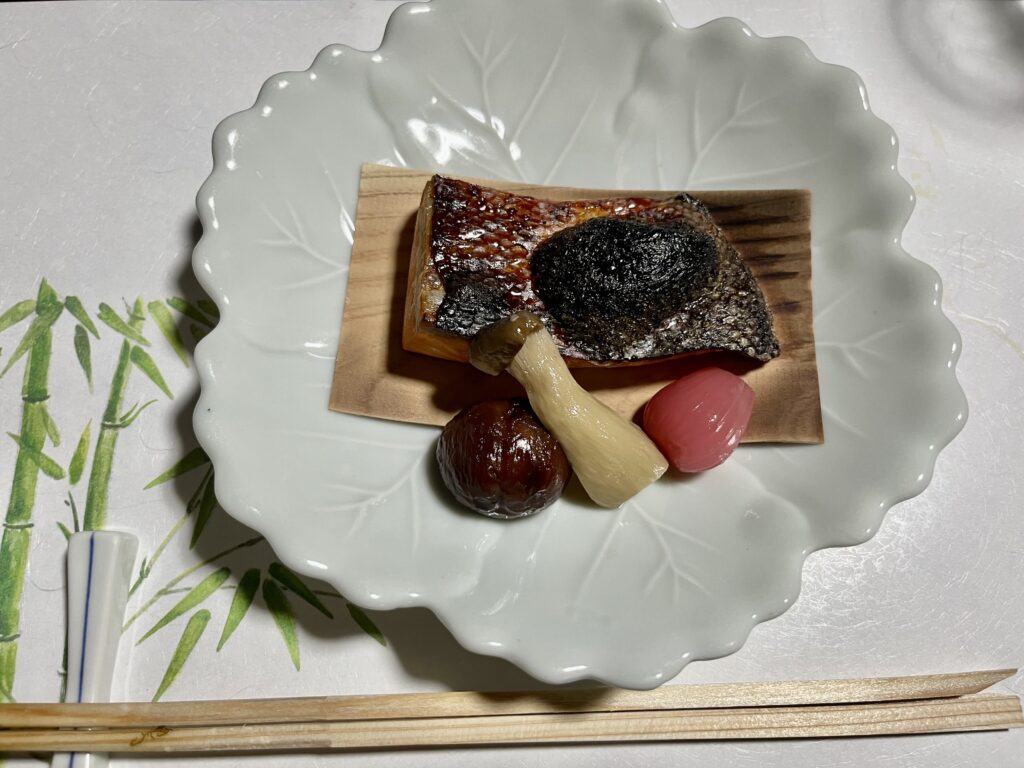
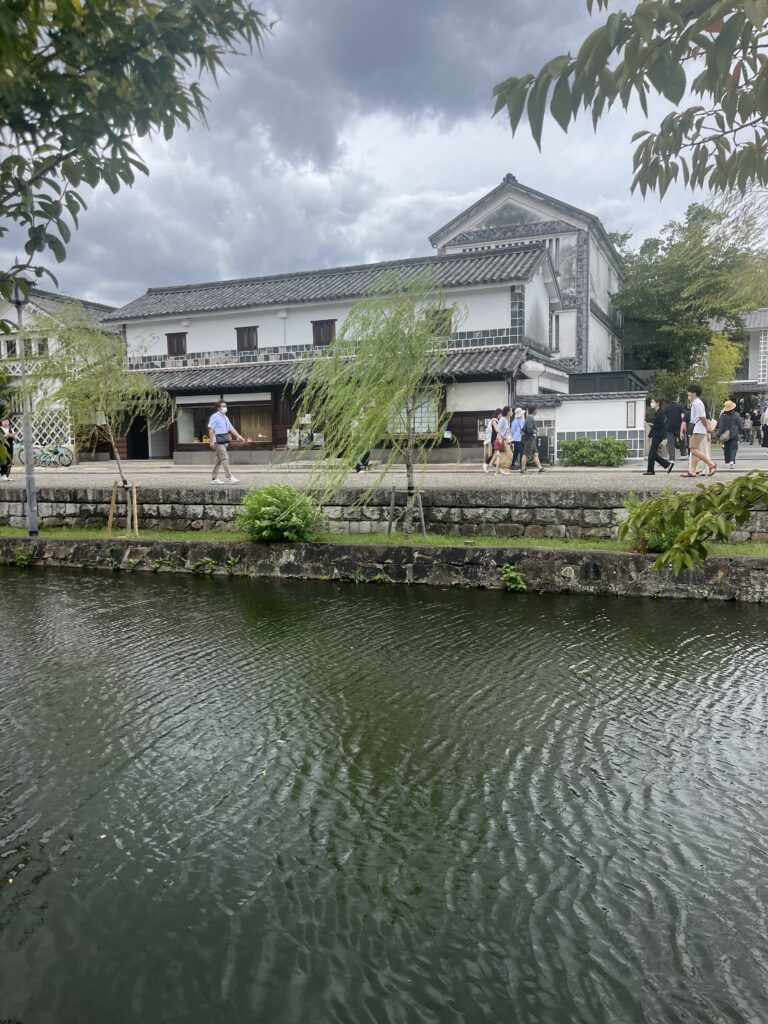
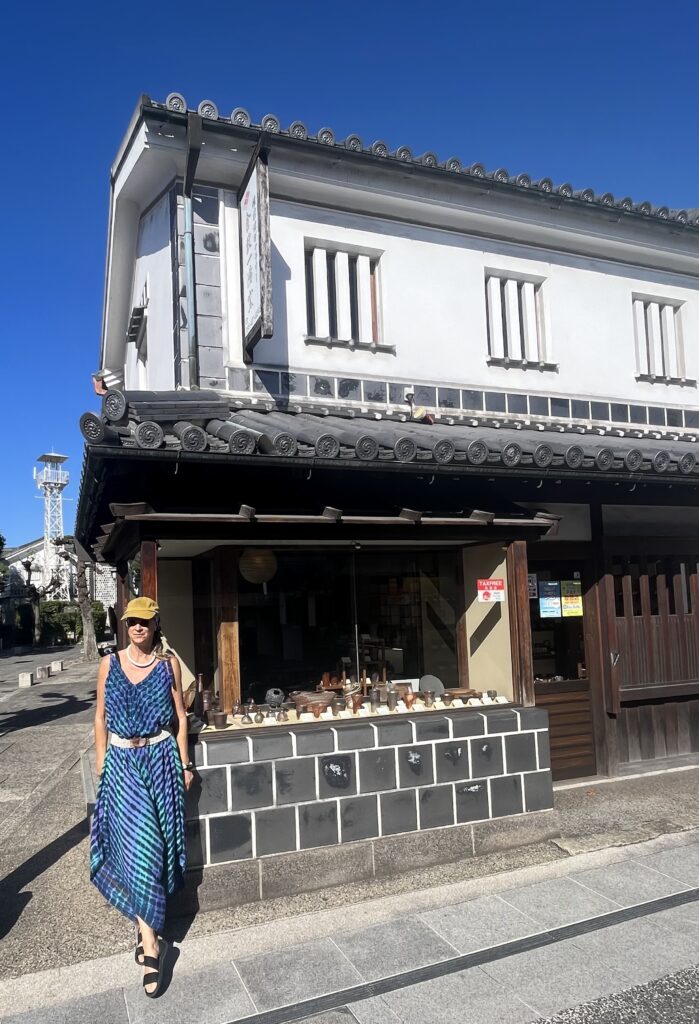
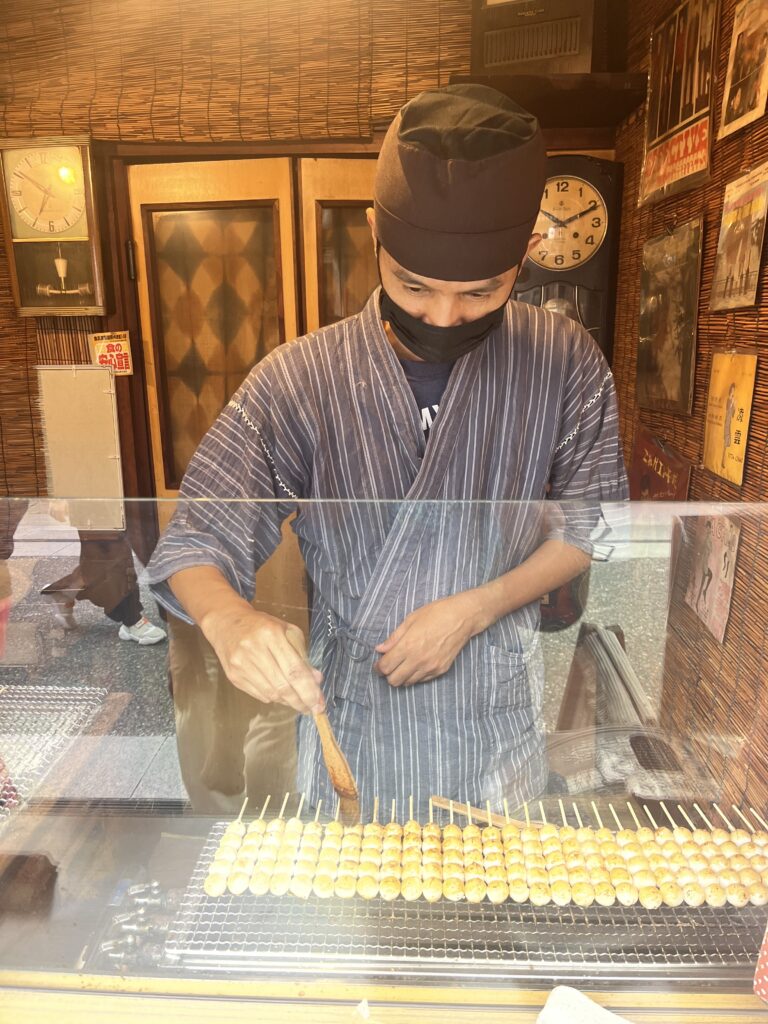
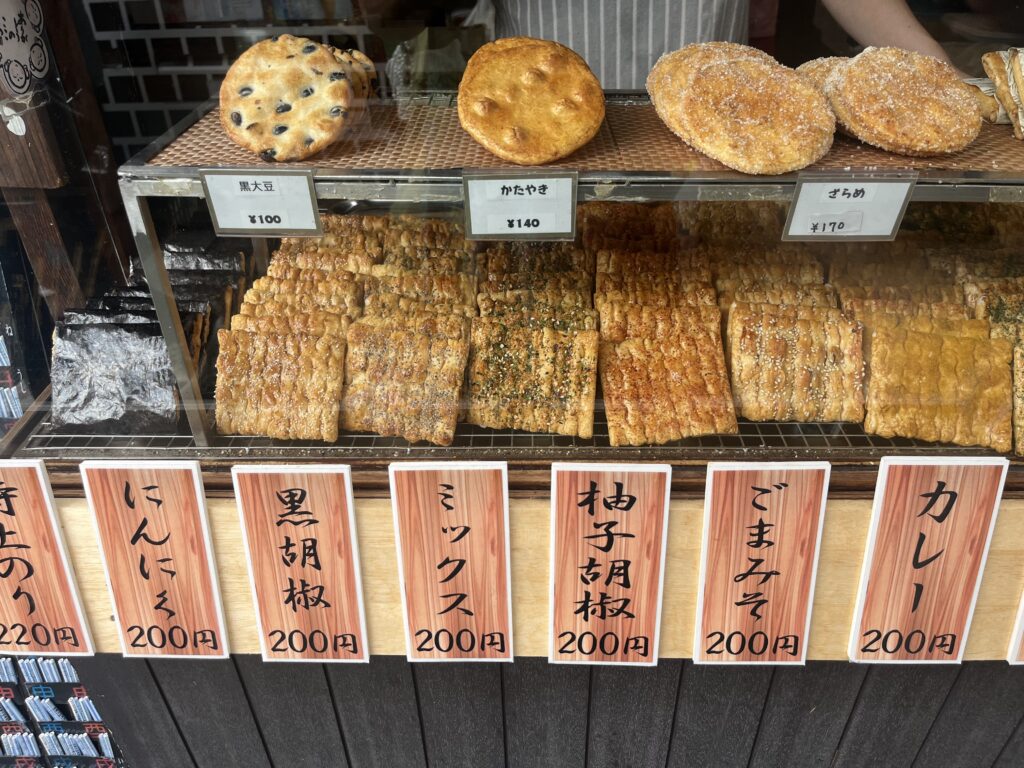
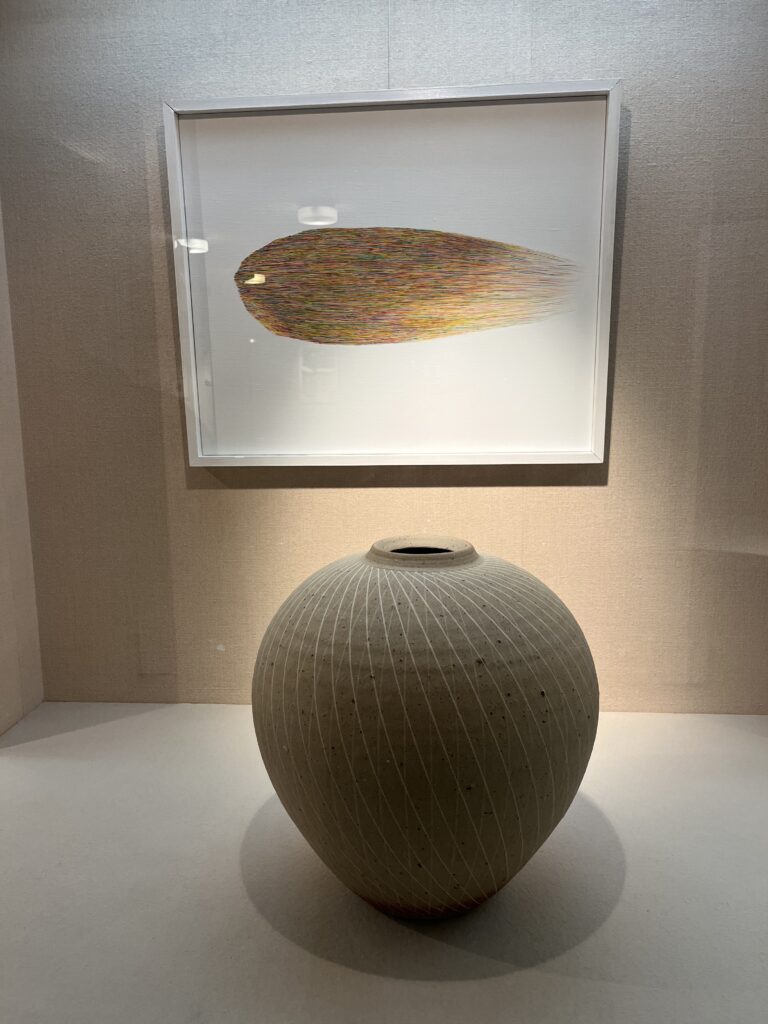
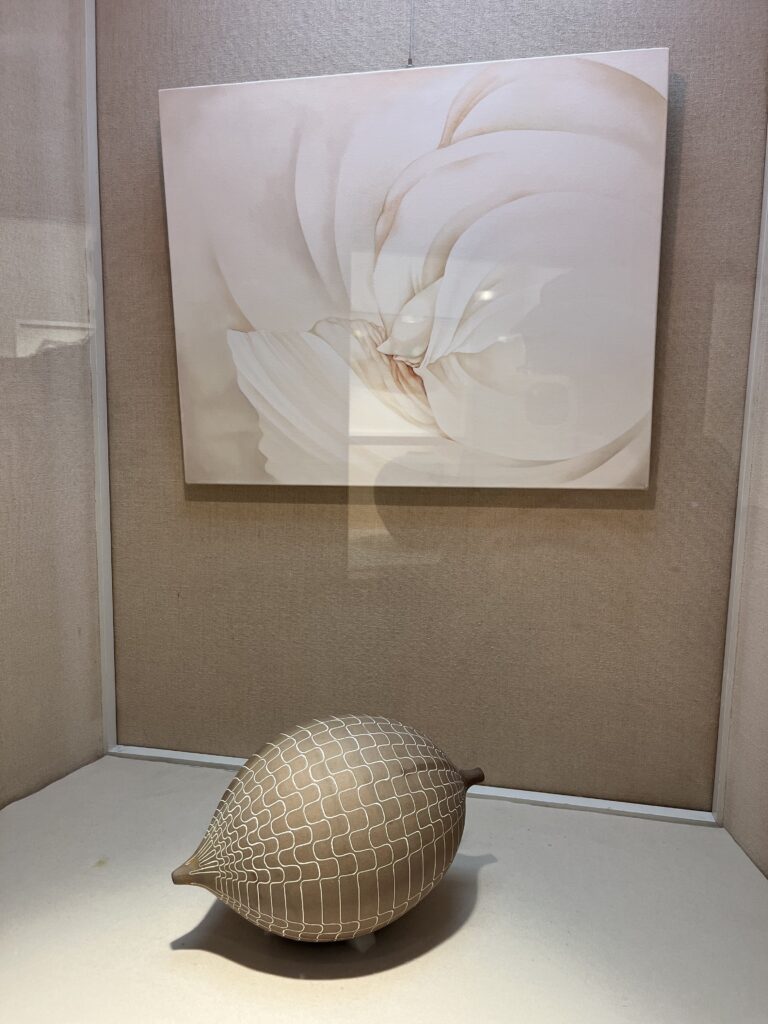
What an incredible place! I so hope to visit Japan one day (without dogs), but am afraid I’ll never be able to afford it. Thanks for (re)sharing your photos and experiences here, Peta and Ben!
Thanks Liesbet. Japan used to be very expensive, but less so these days. It is easy to find reasonably priced restaurants now much like anywhere else in the world. The big cities obviously are more expensive re finding lodging, but much of the beauty of Japan is to be found in rural locations and prices are much lower.
Used to be that housing was the most expensive, then the food, then the ticket. But now due to the exchange rate its roughly equivalent to being in Europe. We got very lucky when we went to Japan the year before as we bought tickets before the country opened, based on the assumptions and news that it wouid. We took the risk and it paid off. We paid $300 round trip for each of us from Chicago to Japan, but obviously that is an anomaly.
Peta & Ben
Wow. Those plane tickets a couple of years ago were a bargain. Thanks for explaining a bit more about costs in Japan, I appreciate it. And, I’m happy to read that it might fall within our budget and options in the future. Maybe when we start house sitting again. 🙂
I absolutely love following your adventures both in places that I have visited (like Japan) and places that are new to me. Your posts are always so inspirational with fabulous photos!
Thank you so much for the lovely positive feedback, much appreciated.
Peta & Ben
This was so lovely. I felt like I’d returned to japan, which I hope to do one day, now with some new ideas of where to go. Biken really appeals to me.
Alison we really loved our time there… two more posts coming up that are also off the beaten track and just wonderful. We also just realized that we forgot during our catcch up to post on our Japan trip last December to a Buddhist monastery in a tiny village and to Beppu where there are the most onsens in one location in Japan.
Once we finish these posts on Japan we will post about the prior trip as well, hopefully. I do recall from your blog how much you loved Japan ~ for all the reasons!
Peta
Terrific read, thank you for sharing your experience. I feel like I was transported there in spirit. Cheers,
Mark
Hi Mark,
Thanks so much for your lovely comment. So glad that you enjoyed reading this post so much! Two more coming up soon…. Also there are a few other posts from our time in Japan in the archives.
Peta
Wasn’t Bikan lovely? It looks like the district hasn’t changed much since I went there in 2016. Back back then, I wasn’t aware of Bizen art pieces this region of Japan is known for. The kaiseki meal you had at the ryokan sounds sublime. What is there not to love about Japan?
I used to live in Japan and had mixed feelings because when it comes to anything aesthetic, yes I agree “what’s not to love in Japan’. But there are of course, lots of other dimensions to Japan that only when you live there (like many places) reveals some less positive factors. (Discrimination, the school system, the salaryman rat race, the bullying and persistent gender inequality to name a few that come to mind). But yes, when it comes to the arts, culinary or ceramics or painting, caligraphy, it can’t be beat.
Nice to hear from you Bama.
Ben
That’s true. I always tell my friends that as much as I love Japan, I can’t imagine living there, especially because of their work culture.
Yes, that as well!
Your post has only whetted my appetite for a trip to Japan – long overdue! It’s nice to read about these less-known places, too; as a potential Japan newbie, I am always reading about the more popular destinations. What a great place for a mental re-set!
Lex, yes yes yes. It is critical to get out of the big cities, Tokyo, Kyoto, Osaka and venture into the smaller towns. This was our fourth trip to Japan together and the more we venture beyond the large cities, the more we have delighted in our discoveries. Thankfully the Japanese rail system is so extensive and efficient that one can easily stretch the perimeter of travel even for first time visits.
Two more blog entries still to come about off the beaten track places. And if we ever do catch up, we omitted in error a previous trip to Japan.
Nice to hear from you
Ben
What a magical trip to Japan. I love the Bizen pottery and learned all about it from my daughter (who built her own wood-fired kiln on her property) How lucky you got to try your hand at building some pottery. I love your place in the countryside. You always find the best places to stay.
Thanks Darlene. How long has your daughter been making pottery?
We do invest a fair amount of time to find unusual and or unique places to stay.
Peta
We are definitely looking to get out into more rural areas on our upcoming trip to Japan, as I’ve spent a lot of time in Tokyo, also Kyoto, Hiroshima, Nara, & Yokohama. So I’m definitely taking note of the places you visited in the countryside as these are super appealing to me. I’m not a potter, but the pottery is beautiful to appreciate. And the ryokans and the canals in Bikan look very appealing.